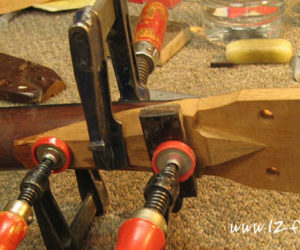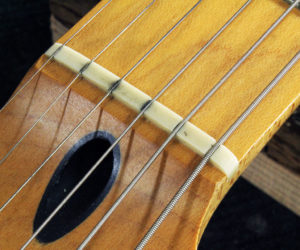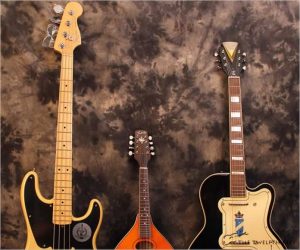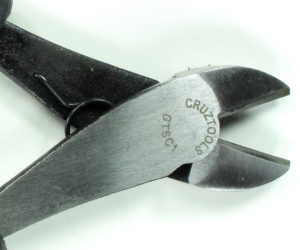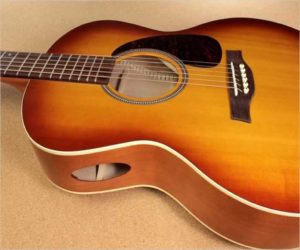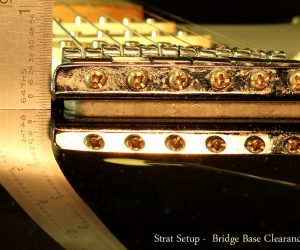The question of instrument restoration regularly comes up at the repair bench. Here, we’ll talk about the broadest outlines of restoration and repairing and look closer in upcoming episodes. Many people who have older, often badly worn or damaged instruments, and especially inherited from family members, want to know about restoring them to playable or new condition. Answering these questions requires looking at all the aspects of what’s happened to the instrument over time, what outcome is hoped for and
MORE →Tools and Techniques
Here we’re looking at a common issue and some ways to address it. This is, of course, getting a Fender Stratocaster guitar – with the original style vibrato bridge – to stay pretty much in tune even when using the bar. As well, we’ll look at setting up the bridge to pull the strings up specific intervals from its resting position. First, it’s necessary to understand that the Fender Stratocaster vibrato bridge isn’t a part, or a set of parts;
MORE →A guitar’s (or any fretted instrument’s) scale length is the basic distance between the nut or zero fret and the bridge’s saddle. This measurement not only determines the placement of the frets for proper intonation, but has a profound effect on string tension, tone, and in some cases, tuning stability.
MORE →Here’s a Godin Seagull with Sound Port modification that increases, for the player, their volume and tone experience of the guitar.
MORE →We’re taking a tour of a Fender Stratocaster trem setup and now in Part 3, we’re going to go through the rest of the action adjustments. These adjustments are a normal part, but not all of a setup; for now we’re not going to look at the electronics.
MORE →